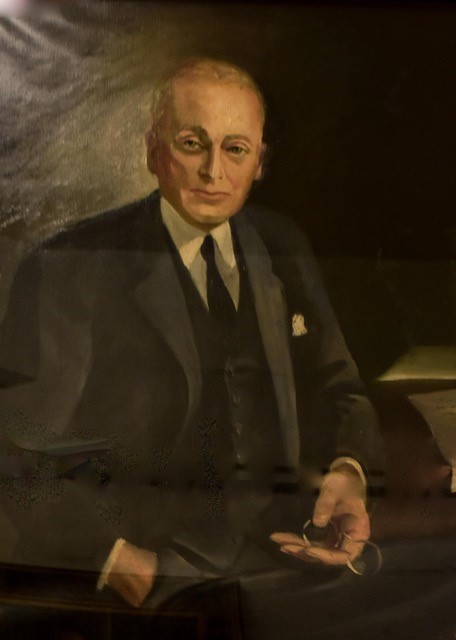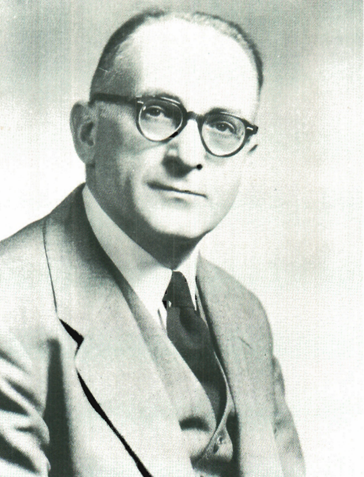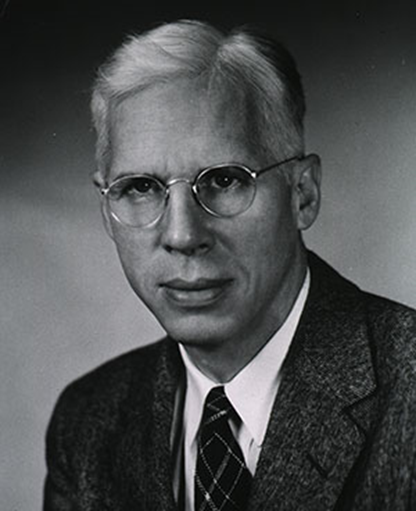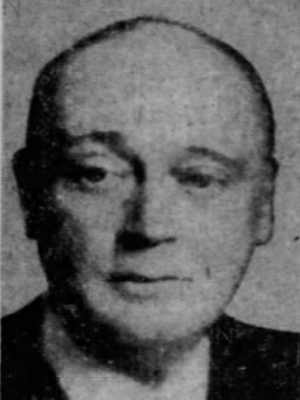- Our History
- The History of Neurology and Timeline
- Timeline
- William Cadwalader, Chair

Prominent People of this Era
click on above name to review summary

click on above name to review summary

William Cadwalader, Chair, 1937 — 1942
Dr. Cadwalader received his bachelor’s degree from Princeton University in 1898 and his medical degree from the University of Pennsylvania Medical School in 1902. He joined the faculty at the University of Pennsylvania, becoming Chair of Neurology in 1937 until his retirement in 1943. He remained on the faculty as an emeritus professor. He served in the Army and rose to the rank of Major, serving with the First City Troop in the Spanish-American War and served with the Pennsylvania Hospital Unit in France during World

War I.
He was an active leader in the national neurological organizations, serving as President of the American Neurological Association in 1939. He was also a member of the Association for Research in Mental and Nervous Diseases and the Newcomen Society of North America. Among his professional achievements was publication of his book, “The Diseases of the Spinal Cord” in 1932 and Lemniscus Symptoms Following Epidemic Encephalitis: Bilateral Impairment of Deep Sensation, Archives of Neurology & Psychiatry in 1926.
Outside of Neurology, Dr. Cadwalader was a patron of the Zoological Society in the 1890s-1920s and was elevated president in 1926. Under his tenure, the Philadelphia Zoo expanded its footprint by 50%, including a new elephant house, carnivora house and children’s zoo.

Opening Day in 1874
References and Sources:
Sources for Dr. Cadwalader’s bio were:
- “Dr. Cadwalader, Neurologist, Dies.” New York Times, June 2, 1957.
- Cadwalader, Williams Biddle. Bears, Owls, Tigers and Others: Philadelphia’s Zoo. New York: Newcomen Society in North America, 1949.
America's First Zoo Historical Marker (hmdb.org)
Am J Dis Child. 1933;45(1):222. doi:10.1001/archpedi.1933.01950140232024 January 1933
CADWALADER, WILLIAM B. "LEMNISCUS SYMPTOMS FOLLOWING EPIDEMIC ENCEPHALITIS: BILATERAL IMPAIRMENT OF DEEP SENSATION." Archives of Neurology & Psychiatry 16.5 (1926): 605-612.
O’Connor, Anashad. “Richard Masland, 93, Authority On the Causes of Birth Defects,” New York Times: January 12, 2003.
http://aisrmedia1.jefferson.edu:81/repositories/2/resources/1
Major Discoveries and Events at Penn during this time
- 1937 - Drs. A. E. Makepeace, George L. Weinstein, and Maurice Freidman study how pregnancy prevents ovulation, work that was foundational for the invention of “the pill” in 1960.
- 1938 - The Louis Marshall Society was founded and described in the men’s undergraduate yearbook for 1938 as “the religious and cultural organization of the Jewish students at the University. The Society is an outgrowth of the former Jewish Students’ Association.”
- 1940 - Christian Lambertsen, M’43: applies for a patent for a self-contained underwater breathing apparatus (eventually known as SCUBA).
- 1942 - Penn was highlighted in a Philadelphia newspaper for teaching four African languages: Moroccan Arabic, Fanti, Swahili and Hausa by native Africans Abdul Kader Larbi, Francis Nkrumah, Joseph Lengo, Abdu Hassan.
Major Translational Research and Clinical Advances during this era
Catalogue for the School of Medicine stated, “It has always been the object and aim of this institution to prepare its students for the practice of general medicine, not to graduate them as specialists.” By 1964, more than 80 percent of the School of Medicine’s graduates pursued residency training in a clinical specialty. 1940-19
Philadelphia Orthopedic Hospital and Infirmary for Nervous Diseases, a leading center for neurologic research in the early 20th century, merged into the University of Pennsylvania “in order [to] more effectively accomplish the purposes and objects for which they were respectively chartered and to further the cause of the study and treatment of bodily deformities and diseases of the nervous system and to render more useful service to the community.” 1937
Frederic Henry Lewey : Dr. Lewy trained at the Neuropsychiatric Laboratory in Munich with Emil Kraepelin, Alois Alzheimer, Franz Nissl and Walter Spielmeyer before taking a position as Professor of Internal Medicine and Neurology at the 2nd Medical Clinic of Charite Hospital in Berlin. He later fled Germany for the United States, settling at the University of Pennsylvania as a Professor of Neuroanatomy and Neuropathology in 1934.
He made numerous contributions to the field of Neurology:
- Described inclusion bodies of the nucleus basalis found in Parkinson’s disease.
- Lewy body dementia, characterized by this finding, is named after Dr. Lewy.
- Described microscopical changes in paralysis agitans in the dorsal nucleus of the vagus, the paraventricular nucleus and the nameless mass of the thalamus, from Lewandowski's Handbook of Neurology (1912)
Source information: The paraventricular nucleus and the nameless mass of the thalamus, from Lewandowski's Handbook of Neurology (1912)
People of this era
- Bernard Alpers: Director of Neuropathology. Became Chairman of the Department of Nervous and Mental Disease at Jefferson Medical College. Later became President of ABPN (1955) and ANA (1959).
- Richard Masland: Completed medical school residency and fellowship at Penn. Associate in Neurology 1940-1942. Later went on to be the director of the National Institute of Neurological Diseases and Blindness (NINDB) and the president of the World Federation of Neurology.
